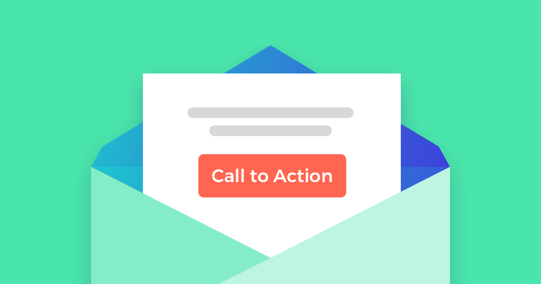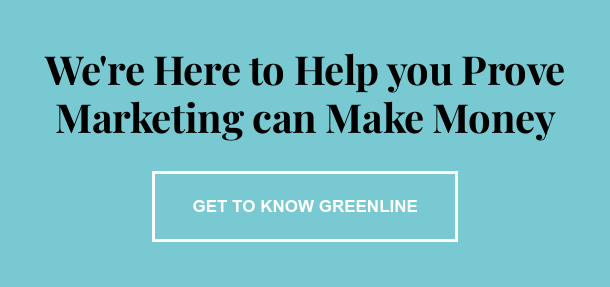Having impactful call to actions (CTAs) in your emails creates an opportunity for readers to engage with your content and take a suggested next step. A CTA is some sort of content - typically a button - intended to get viewers to perform a certain action that logically follows the email content, such as “Learn More” or “Download Now”.
CTAs can be one of the most important aspects of an email. Emails with just one CTA increased clicks by 371% and sales by 1,617%. Most email marketing is utilized to drive sales, whether it’s a bottom-of-the-funnel purchase or a nurturing email with more information to lead to a contact buying from you. Either way - if you don’t have a clear call to action, readers are simply less likely to click.

Tips for Effective CTAs in Email
1. control the number of call-to-actions
Don’t include too many call-to-actions in one email or promotional tool. This can overwhelm the reader and only deter them from actually clicking. It’s important to be strategic about how many call-to-actions you have. Only include them when relevant to the content or offer!
2. placement matters
When considering where to put a call-to-action, be intentional about placement. Consider where customers would be most likely to engage with the call-to-action. If you’re not sure where optimal placement for your readers is, I recommend using email analytics tools to show where recipients are stopping scrolling and where they are clicking. This insight can be gold.
There are two common spots to put a call-to-action - either “above the fold”, which means the reader will see it before having to scroll down, or at the bottom of the email. It all depends on your main goal and your content. If you need more of an explanation, putting it at the end of the email makes sense.
3. use action-oriented text
Your word choice should reflect your goals. You want customers to act now and act fast. But be careful not to use action words that create stress. Use action words that make it apparent they’ll get something out of it...not just “submit”, “enter”, or “download”.
The context of your email will dictate what wording you will use for your call-to-action. Focus on making it offer-related. For example, if the offer is aiming to sell tickets for an upcoming show, try using the phrase “Reserve Your Seat” instead of words like “Submit” or “Enter”.
4. keep it short
When it comes to call-to-actions, the shorter the better. A call-to-action should be large and include actionable text. The general rule of thumb is to keep call-to-actions around 2-3 words, but no more than 5-6.
5. use appealing design
The design of a call to action will make a huge difference in click-through rates. Use your brighter or more eye-catching brand colors to grab the attention of readers. Another suggestion is to use bold, easy-to-read text. If you take these steps to ensure readers will see the call-to-action, then you can focus in on placement and verbiage.
6. try using first person language
Some call-to-actions are better said in first-person. In fact, a recent study by Unbounce showed when using the first-person pronoun in a call-to-action button, it resulted in a 90% increase in clicks. Some examples of this include “Get My eBook”, or “Tell Me More”.
7. timeliness & urgency
Creating a sense of urgency in a call-to-action button will help increase click-through rates. If a reader sees the word “now” or “today only”, they will be more inclined to want to click on the button and not miss out.
What if you’re promoting something that’s always offered? How do you create timeliness in that type of situation? It’s still possible to entice readers to feel like they’d be missing out if they didn’t engage as soon as possible. Consider offering a survey, which will then get them excited about their results and want to take action.
8. make the offer enticing
The main goal of a call-to-action is to be enticing to the reader. It should offer them something exciting or worth their while. One of the most effective ways to do this is by personalizing your call-to-action. Personalized call-to-actions perform 202% better than basic call-to-actions. Call-to-actions can be personalized by including information such as location, browser language, or other target audience information.
9. test, test, test!
When it comes to call-to-actions, testing before sending is crucial. Testing beforehand will help measure the effectiveness of different designs and text styles. Placement, design, copy, text, all make a difference in how your readers want to interact with our call-to-action.
A/B testing involves submitting multiple versions of the same message to a sample of the target audience and analyzing the results of how the subject line, images, call-to-action, etc. performed. Some important variables to test include color, size (bigger is not always better), position, word choice, special effects, etc. Once you create multiple copies, you can test and choose “best click-through rate” as your metric. From there, it depends on your results. If a certain color performs better, use that color. If a different phrase pulls readers in, use that phrase. This is why it’s important to play around with all the different options for call-to-actions.

effective cta ideas
Still feeling stuck? Here are some effective call-to-action ideas to get you started:
- Shop now
- Shop & Get 50% off
- Act now
- Learn more
- Download the eBook
- Keep reading
- Get the app
- Watch now
- Register now
- I’ll be there!
- Sign me up
- Start your free trial
- Upgrade now
- Sign up and save
- Get results now
- Take a survey
- Give us your feedback
- Follow us
- Like us on Facebook
As you can see from the list of ideas above, the options for call-to-actions can be endless. They can encourage purchase decisions, reading content, watching videos, registering for events, signing up for services, learning about results, giving feedback, etc. The important thing to remember is to keep it short and to include action words that intrigue the reader to want to click!
Creating effective CTAs and seeing results takes time and the willingness to experiment with new tactics. Be patient with the process.




